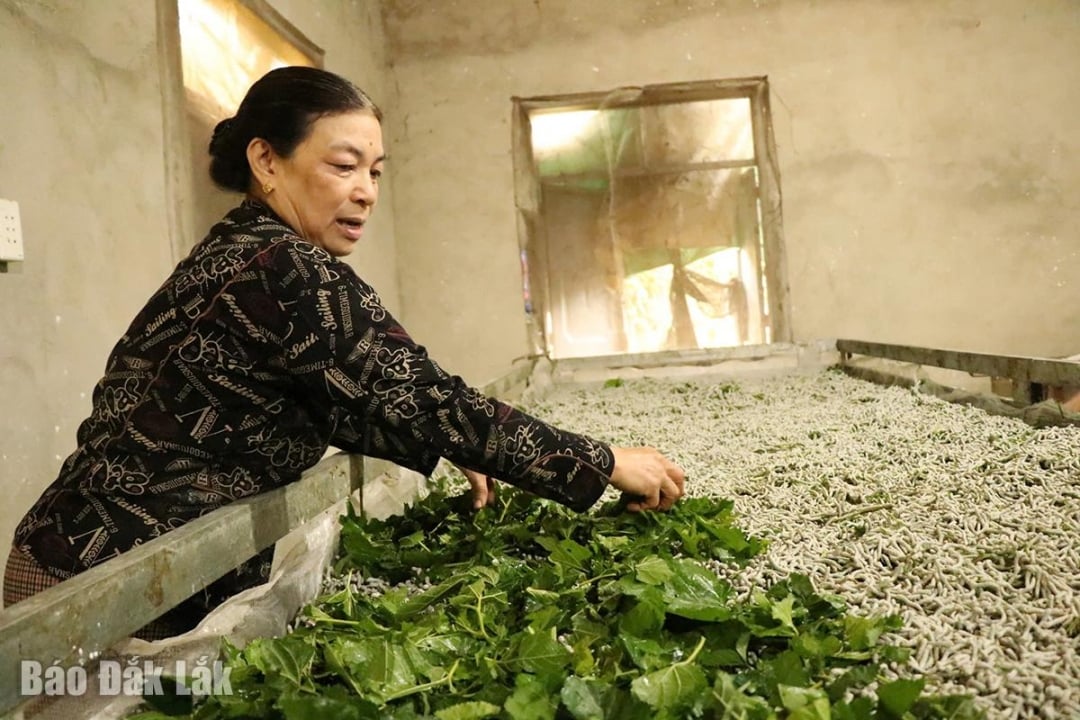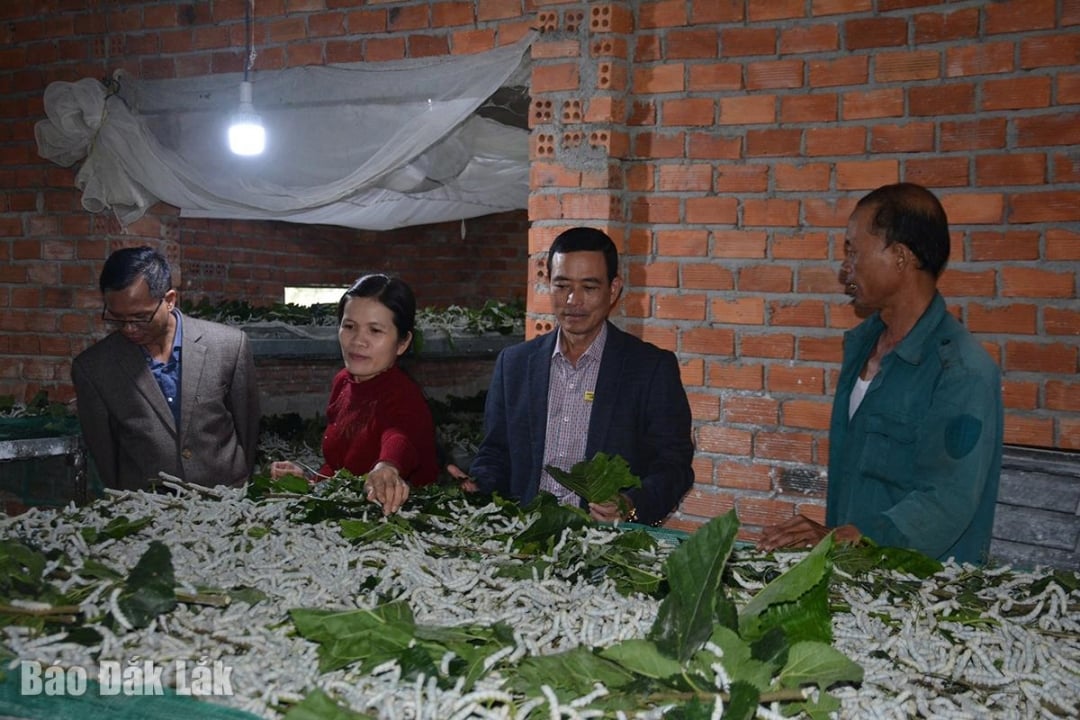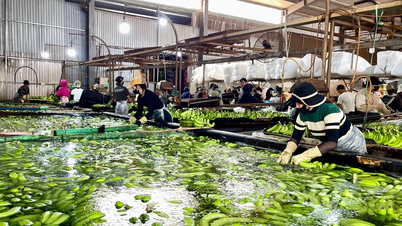In 2019, Mr. Le Dinh Tu (in Cu Dram hamlet, Cu Dram commune) converted 5 sao of land growing grass to raise cows to grow mulberry to raise silkworms. At first, he only bought 1 box of silkworm seeds to try raising. After 14 days of raising, he collected 50 kg of cocoons. All cocoons were purchased by traders at home for 200,000 VND/kg, after deducting expenses, he earned a profit of 8 million VND.
Realizing that growing mulberry and raising silkworms is effective, Mr. Tu gradually expanded the scale of farming. Currently, his family has 2 hectares of mulberry and a 260 m2 silkworm house. On average, each month, his family raises 4 boxes of silkworm seeds, harvesting about 200 kg of cocoons. With a selling price of 210,000 - 220,000 VND/kg of cocoons, after deducting expenses, his family earns about 40 million VND in profit. In addition, Mr. Tu also researches and learns more techniques of breeding silkworms to serve the silkworm farming of his family and people in the area. "Raising silkworms requires little investment capital, while the consumption of products is favorable, helping the family have a stable income. Currently, my family is investing in expanding 3 more hectares of mulberry and purchasing more livestock equipment to increase the number of farms," Mr. Tu shared.
 |
| Mrs. Bui Thi Kim Anh's family (Yang Reh commune) has a stable income thanks to growing mulberry and raising silkworms. |
Similarly, the silkworm farming business has helped Ms. Bui Thi Kim Anh's family (in Yang Reh commune) have a stable source of income. In 2020, Ms. Anh converted 1 hectare of corn land to silkworm farming. She invested 140 million VND to buy mulberry seedlings and build a farm to raise silkworms. On average, she raises 1-2 boxes of silkworms per batch, and after only 14 days of raising, she harvested 50-60 kg of cocoons. With the selling price ranging from 190,000 - 220,000 VND/kg of cocoons, after deducting costs, she earned a profit of 8-10 million VND/box.
In recent years, the mulberry growing and sericulture profession in Krong Bong district has brought high economic efficiency, created jobs and brought stable income to farmers. From the effectiveness of the model, many farmers have begun to expand the scale and link up to develop mulberry growing and sericulture. Currently, the whole district has about 140 hectares of mulberry, mainly concentrated in the communes of Yang Reh, Hoa Le, Cu Dram, Cu Pui... Up to now, the district has also established a number of professional associations and cooperatives for mulberry growing and sericulture that operate effectively.
Ms. Tran Thi Thu, Director of Hoa Le Mulberry and Silk Agricultural Services Cooperative, said that in 2023, the cooperative was established with 20 members. Now it has increased to 40 members, with a total mulberry growing area of 45 hectares. Currently, on average, the cooperative sells 3-6 tons of cocoons to the market each month. “On average, with 1 hectare of mulberry, people can raise 30-35 boxes of silkworms/year. After about 15-17 days, each box of silkworms will yield 50-70 kg of cocoons. With the current average selling price of 200,000 VND/kg of cocoons, after deducting costs, breeders earn a profit of 8-9 million VND/box. In the coming time, the cooperative will invest in infrastructure to self-incubate seeds to meet production needs, reduce input costs and increase profits for members,” Ms. Thu shared.
 |
| Leaders of Krong Bong district visited the silkworm farming model at Hoa Le Silkworm Agricultural Service Cooperative. |
According to the Department of Agriculture and Environment of Krong Bong district, in reality, the local mulberry growing and silkworm raising industry has great potential for development due to its large land fund; suitable climate and soil conditions; silk products are showing positive signs from the market... However, currently, the mulberry growing and silkworm raising industry still faces many difficulties such as: the scale is still quite small and not concentrated; the output of the product is dependent on the intermediary stage. In addition, mulberry growers and silkworm raisers still lack production capital, especially capital to invest in silkworm raising houses according to technical processes, so productivity is still limited; they are not proactive in local breeding (mainly imported from Lam Dong province) so the quality is not high; they have not received specialized training in silkworm raising techniques...
With the desire to develop the mulberry growing and silkworm breeding industry quickly and sustainably, Krong Bong district is focusing on implementing solutions to expand the scale towards commodity production associated with product consumption markets. The orientation of the district is to continue expanding the scale and area in areas with suitable conditions. The goal in 2025 is to have mulberry growing area in the district reach 200 hectares.
Source: https://baodaklak.vn/kinh-te/202504/huyen-krong-bong-phat-trien-ben-vung-nghe-trong-dau-nuoi-tam-a2b17d9/





![[Photo] Prime Minister Pham Minh Chinh chairs conference on anti-smuggling, trade fraud, and counterfeit goods](https://vphoto.vietnam.vn/thumb/1200x675/vietnam/resource/IMAGE/2025/5/14/6cd67667e99e4248b7d4f587fd21e37c)




















































































Comment (0)